Mailerlite vs Mailchimp: What is the best email marketing platform?
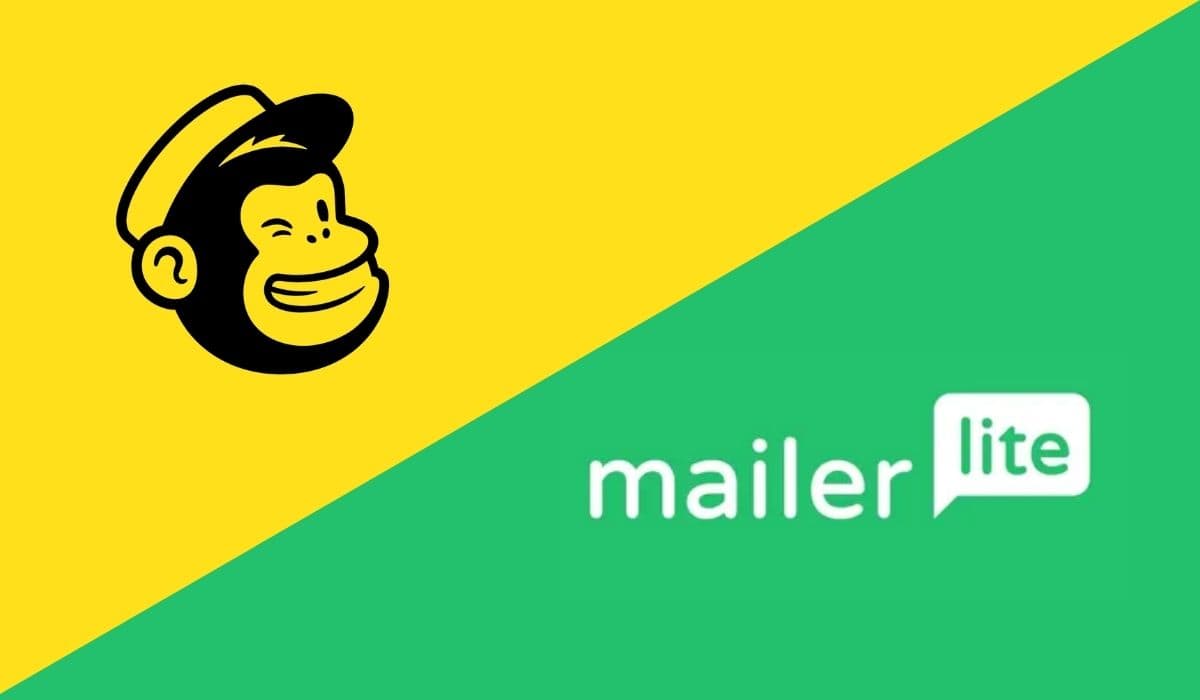
In a world of countless marketing channels — numerous social media platforms, in-person events, webinars, phone calls, online forums and chat rooms — email is still a hugely popular choice for communicating with customers. It’s cost-effective and allows you to build a direct relationship with your audience.
But which email provider is the easiest to use, or the most affordable? Which email marketing platform helps you minimize bounce rate, or helps you build the best-looking emails, or provides the most granular data management?
We’re here to take a deep dive into the best and most popular email marketing service providers.
Mailchimp — Intro and pricing
Billed as a place to “grow your audience and your revenue”, Mailchimp is an ecommerce platform for emails and automated workflows, customer segmentation, plus education and tips.
Here is the breakdown of plans and their respective prices:
- Free plan: $0/month for up to 1,000 monthly email sends and one user
- Essentials plan: From $13/month for up to 5,000 monthly email sends plus testing and scheduling features
- Standard plan: From $20/month for 6,000 monthly email sends plus personalization, optimization tools, and enhanced automations
- Premium plan: From $350/month for 150,0000 monthly email sends plus dedicated onboarding, unlimited contacts, and priority support
These figures are for up to 500 email subscribers. If you need more subscribers, you can pay more; there’s a dropdown menu showing how the price varies at mailchimp.com/pricing.
How it works
Upon logging in, you’ll see the statistics for your most recent campaign performance. This will include:
- recipients
- open rate and clicks per unique open
- number of successful deliveries
- total opens and total clicks
- number of orders
- average order revenue and total revenue.
Audience
This is where you import, add and manage your subscribers, also known as contacts. You can manually add new subscribers one at a time by inputting their email address and personal information into a form or you can automatically import customer data in bulk from another platform, upload a CSV file, or copy and paste new contacts’ details.
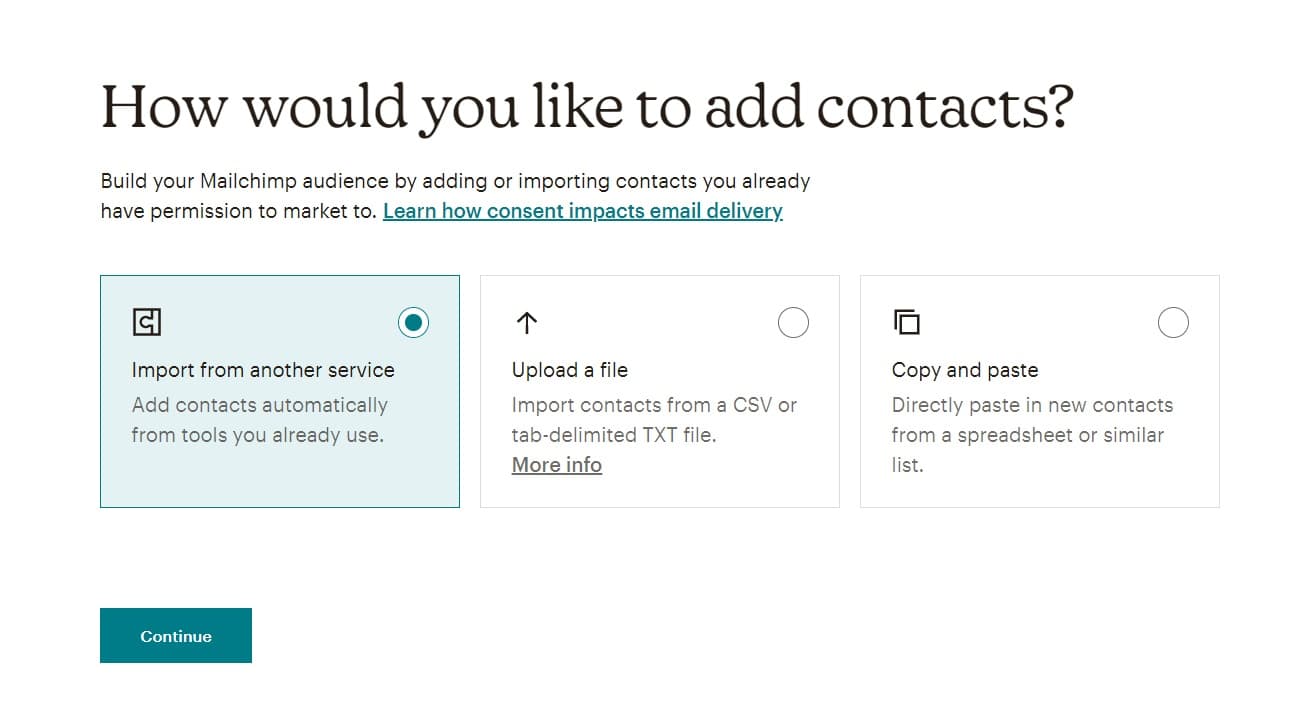
Once you have imported and/or created subscribers, it’s easy to segment these people according to their previous shopping behavior, or location, or submitted personal preferences. You can manually add Tags to customers to be able to send targeted messages to people with similar characteristics, and Groups let you segment subscribers according to certain criteria or behavior.
This section is also where you build sign-up or registration forms to allow your audience to manually subscribe themselves to your email. This can be done through HTML forms, a pop-up box that can be embedded on any site, a contact form that sends messages to your inbox, or a number of integrations with your existing messaging software.
Campaigns
This is where you design and populate your emails, known as campaigns. There’s a choice of email templates to use depending on if you are pushing new products or making an announcement, but you can also develop new themes and layouts in the Content Studio.
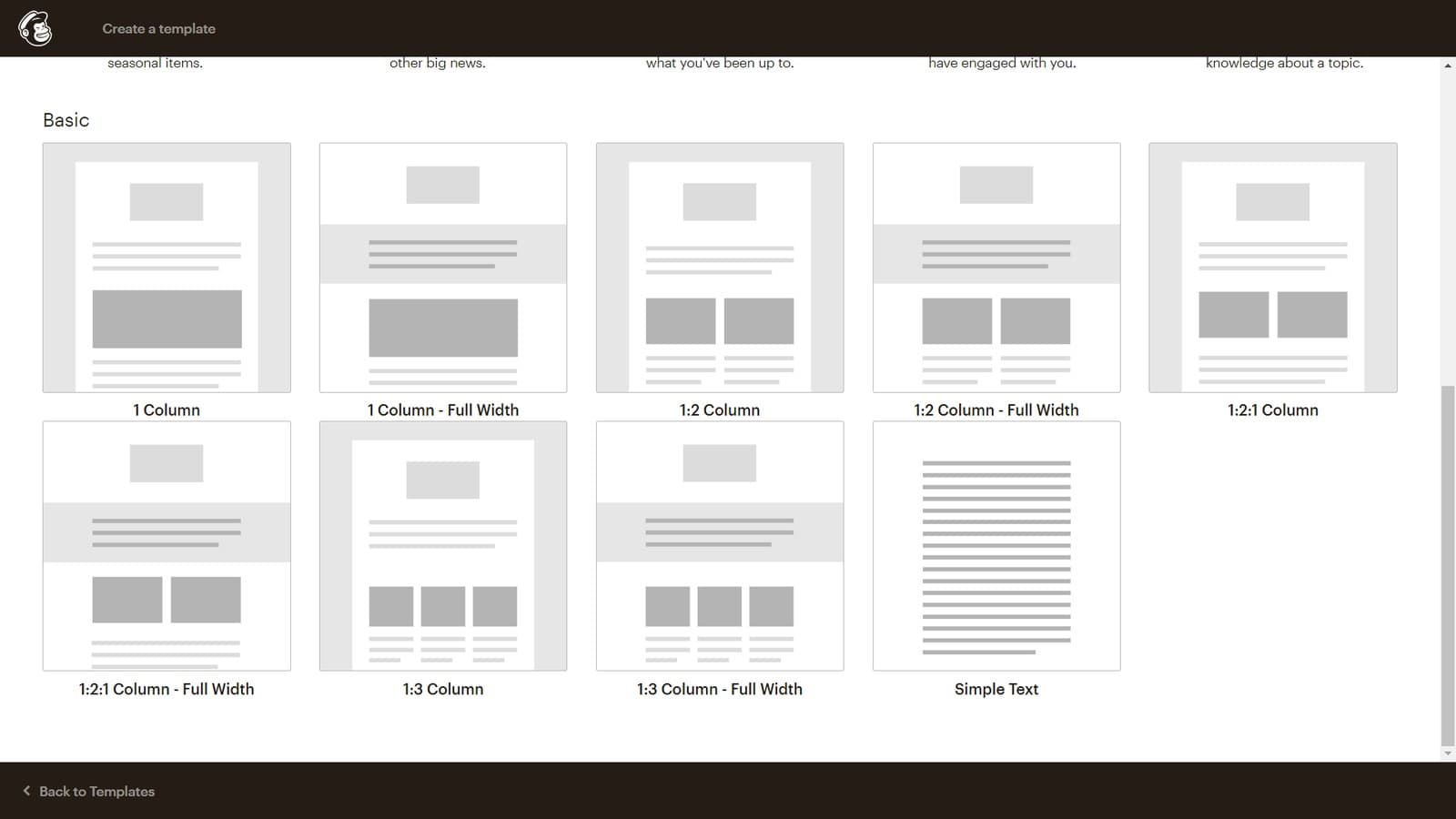
Automations
This allows users to customize workloads, here known as Customer Journeys. There are almost endless opportunities for ways to promote your brand or products to your existing audience — such as sending a promotional message to abandoned cart customers — or to acquire new subscribers, for example with Facebook Ads campaigns (optionally integrated via Zapier).
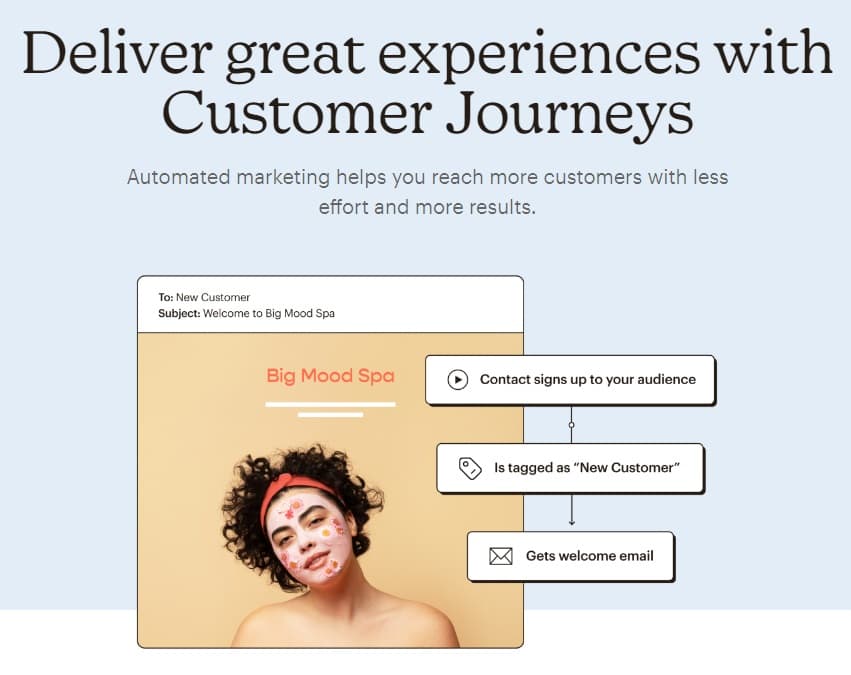
Website
Taking the ecommerce idea and running with it, MailChimp now also offers a website-building platform to “tell your story, connect with people, and grow your business”.
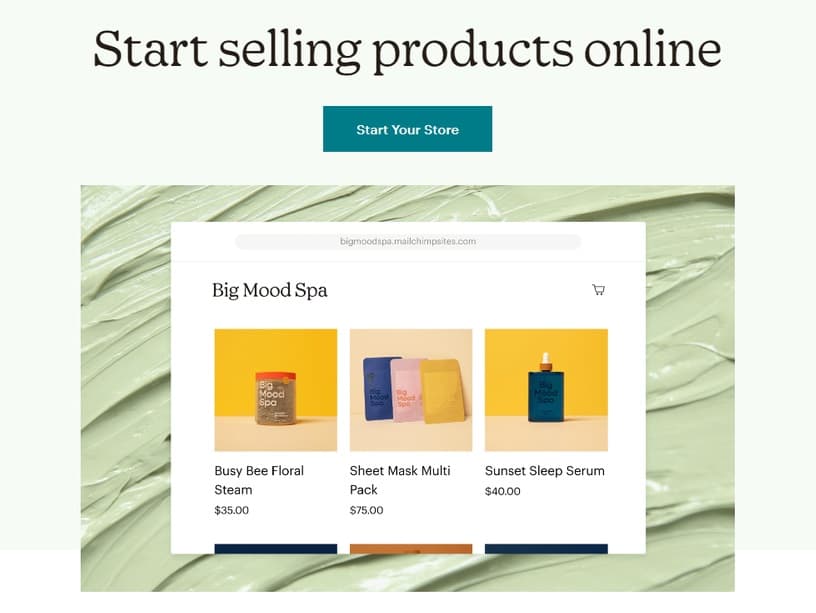
It’s possible to get up and running with just one product; after 15 to 20 minutes to set up payments via Stripe (which lets you receive payments from all major credit cards) and as little as 5 minutes for personalization you can start selling. Mailchimp automatically builds order confirmation, shipping notification, and abandoned cart emails for your store.
Mailerlite — Intro and pricing
Billed as a way to “create email marketing and websites your audience will love”, Mailerlite offers digital marketing tools to grow your audience faster and drive revenue smarter. The MailerLite team aims to “provide intuitive solutions for complicated tasks” with clean and functional design and award-winning support.
Here is the breakdown of plans and their respective prices:
- Free plan: Sending is free for up to 12,000 monthly emails and up to 1,000 subscribers
- Growing Business plan: $9/month ($108 if billed yearly) for unlimited monthly emails, three users and up to 1,000 subscribers plus unlimited templates and digital products ecommerce
- Advanced plan: $18/month ($216 if billed yearly) for unlimited monthly emails and up to 1,000 subscribers with live chat support and password-protected pages
For more email subscribers, you can incrementally pay more; there’s a sliding scale at mailerlite.com/pricing to see how the pricing changes.
How it works
Once you’re logged in, MailerLite gives you a performance overview of recent email campaigns with statistics including total active subscribers, new subscribers today and this month, number of emails sent, opens, clicks and CTOR (click to open rate), number of unsubscribed and spam complaints if any.
Campaigns
Email newsletters, known as Campaigns, are split up into blocks which can be dragged and dropped into the edit. Examples of blocks include Logo + content, Article with image background, Highlight video, RSS list, 1 product aligned left and Footer.
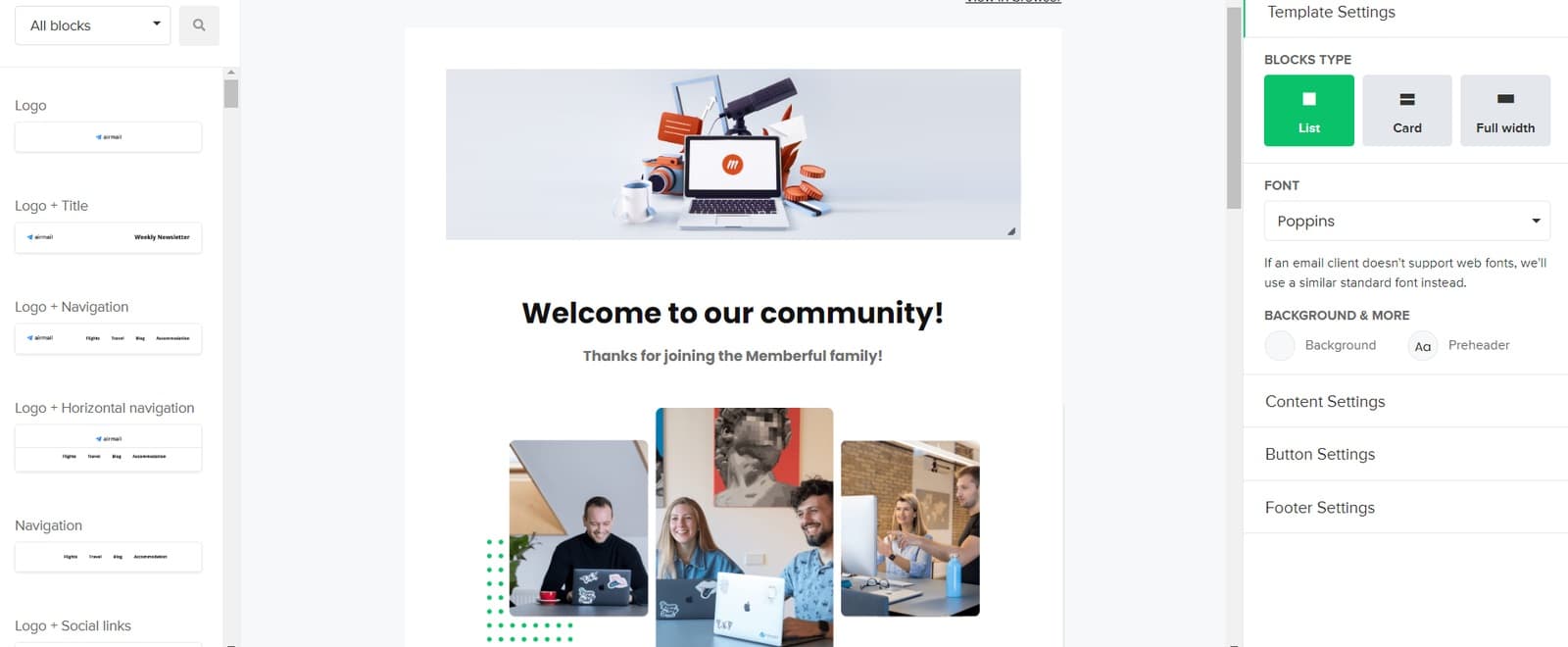
Once you’re happy with the design, you can select which subscribers will receive this email campaign, either through basic targeting or through advanced segmentation such as ‘Signup source is API’ or ‘Signup date is before July’.
Subscribers
There are four main ways to add new subscribers: import from a CSV or TXT file, copy and paste from Excel, add a single subscriber and import from Mailchimp. The Mailerlite platform will automatically clean duplicate instances of email addresses upon import.
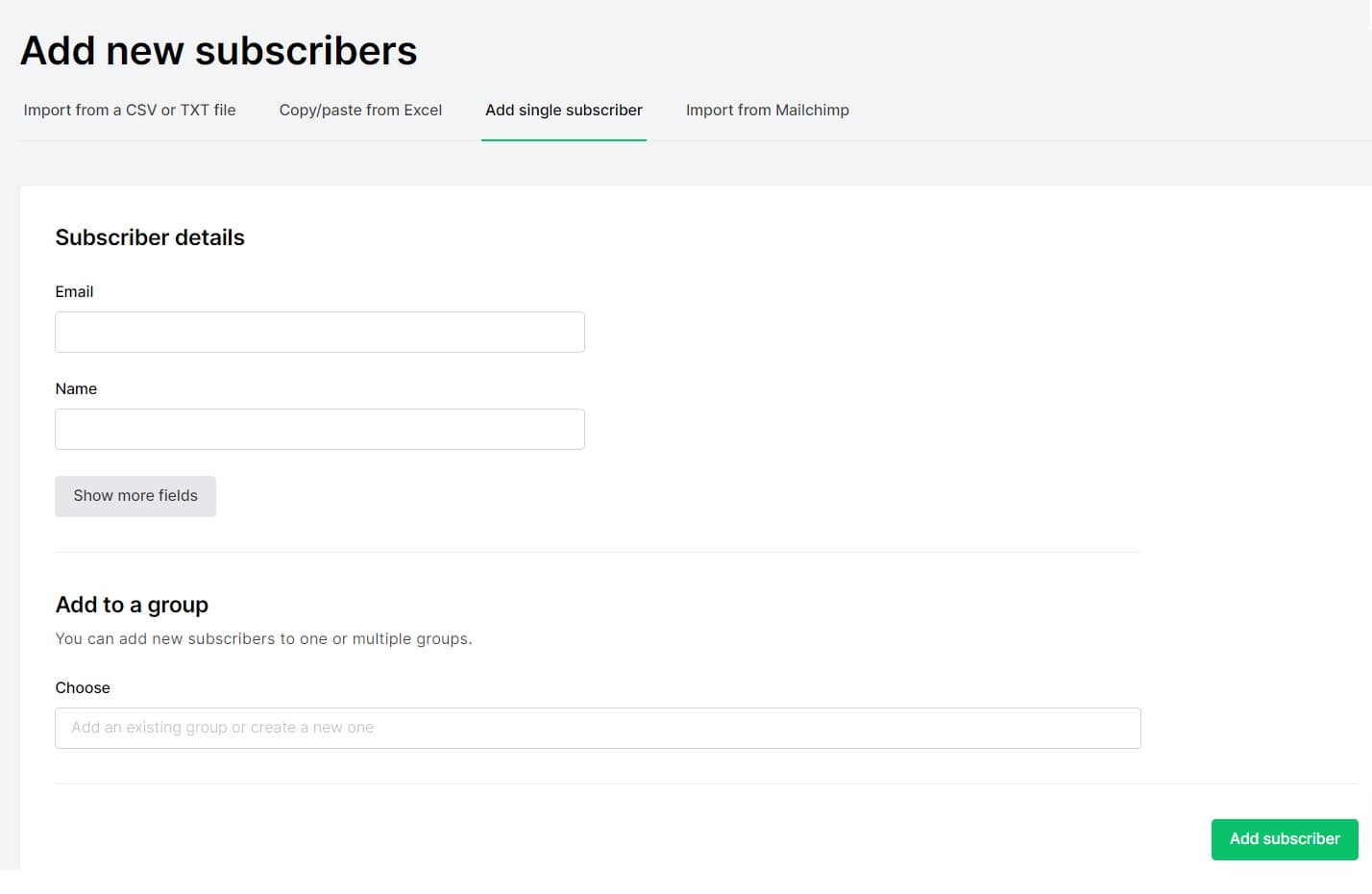
Once you have imported or added subscribers, it’s possible to separate out these people for more accurate targeting: Segments are dynamic lists of your subscribers based on their attributes and behaviors and Groups let you organize your subscribers based on interest, actions, and more. You can also add customized Fields to store any extra information.
In this section too is the Stats tab, where you can look into your emails’ average open rate per campaign, average click rate per campaign, average subscribe rate per month and average unsubscribe rate per month.
Forms and Sites
MailerLite’s form builder lets you design and schedule pop-up subscription sign-ups to capture readers’ attention best. There are several pop-up types, including floating bars and sliding boxes, and you can choose a time duration or scroll length before the pop-up shows.
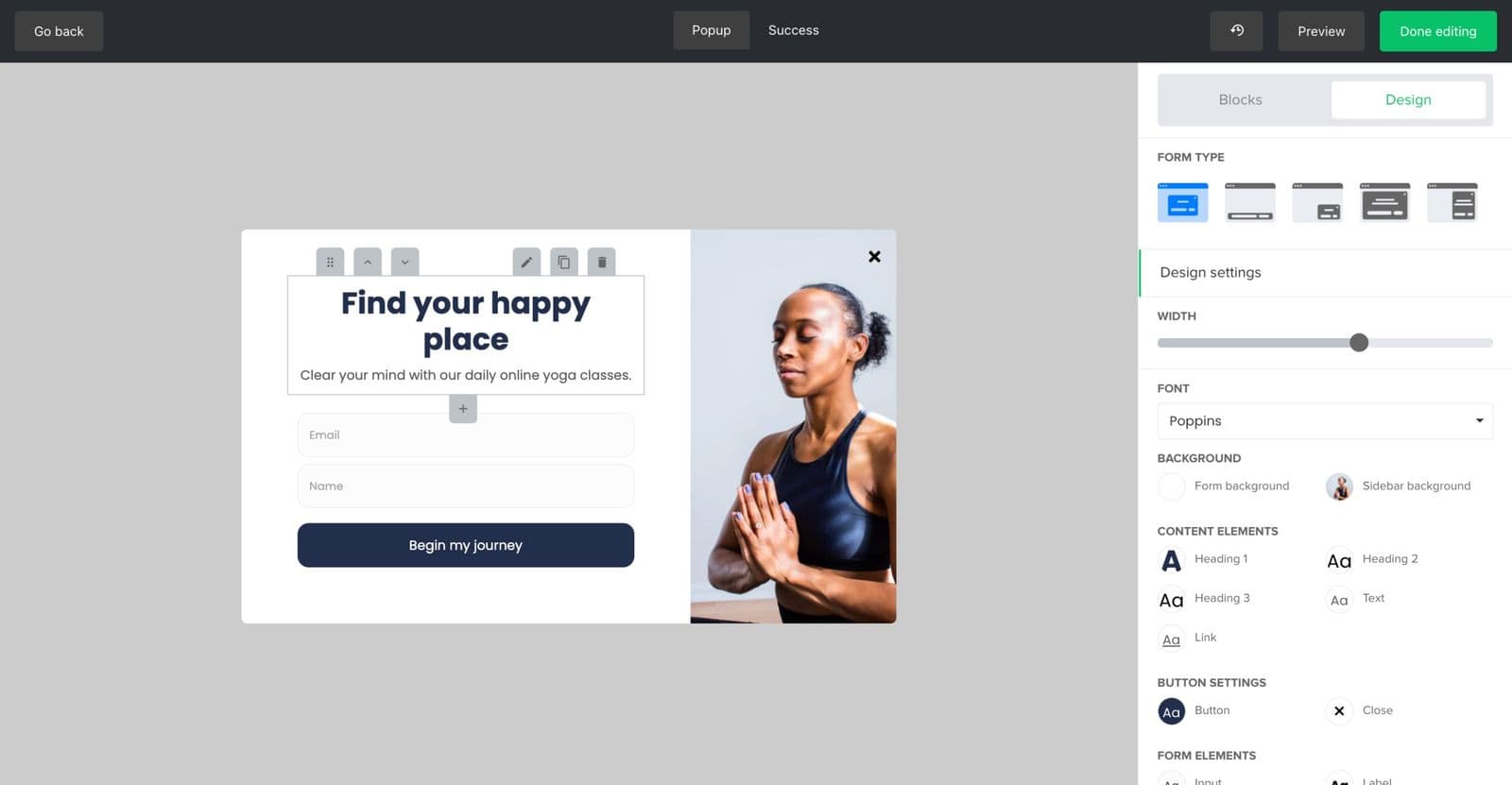
You can also build simple landing pages to collect sign-ups and/or promote old email content to encourage interaction, or publish a customer survey drive engagement.
Automations
These workflows automatically send emails based on subscribers’ actions or preferences such as their first sign-up or birthday. You can automatically tag subscribers based on their on-site behavior — and use these tags to create new groups and segments for targeting — as well as send promotional emails to customers with abandoned carts.
Conclusion: Mailerlite vs Mailchimp
MailChimp and MailerLite both cater to slightly different user bases within the email marketing space: MailChimp has a breadth of capabilities; MailerLite is lightweight and affordable.
Here at Memberful we recommend that you should choose MailerLite when:
- You are on a tight budget
- You are new to email marketing and want a platform that is easy to use
- You need a generous free plan, or
- You are looking for a platform with a simple user interface.
On the other hand, here is when to use Mailchimp:
- You need more advanced automation features or integrations
- You need premium live chat customer support, or
- You are willing to pay more for a more powerful platform.
Ultimately, the best way to decide which platform is right for you is to try both of them out and see which one you prefer. Both MailerLite and Mailchimp offer free trials, so you can test out their features before you commit to a paid plan. All options serve a different purpose, and it’s up to you to decide which is best for you and your audience. Happy emailing!
Appendix: Research methodology
During our research, we considered the top 4 metrics that any great email platform should offer. Once the metrics were defined, we looked to give them a score between 1 and 5 in order to create a total score that would let us rank them. Based on the total score, we were able to compare and draw a conclusion on which platforms are the best and warrant further investigation.
The metrics These are the 4 metrics with explanations for what we believe a great email marketing provider should offer:
Ease / speed of getting started
- Was it easy to get up and running, including creating an account and sending the first email?
- Was the instruction for doing more complicated task, such as building a website, clear?
- Is there a logical and clear way to navigate through the different services of the platform?
Ease of integration and level of intuition
- How easy/intuitive is it to connect the platform with third-party software?
- If there are no existing integrations, is building one easy? Are APIs readily available?
- Are there functionalities that feel incomplete? Is it easy to create an email that looks and feels close to what you had in mind?
Brand positioning
- How does the company sell itself? How does it use wording and visuals to attract customers?
- What types of customers does it aim to attract?
Fees
- What fees does the software charge? Are there extra processing fees (due to Stripe and similar)?
- Is there a free tier or trial period? If so, does the trial offer a complete experience or are some functionalities reserved for paying customers?
FAQs for Mailerlite vs Mailchimp
Which platform is better for beginners?
Both are beginner-friendly, but MailChimp might have a slight edge with its more intuitive interface and drag-and-drop editor.
Do both platforms offer a free plan?
Yes, both offer freemium plans. MailerLite's free plan lets you manage up to 1,000 subscribers and send 12,000 emails per month, while MailChimp's free plan lets you manage up to 2,000 subscribers and send 12,000 emails per month.
Which platform has more powerful automations?
MailChimp has more complex automation workflows with advanced branching logic and triggers. However, MailerLite's automation builder is more user-friendly and visually intuitive.
Which platform has better reporting and analytics?
MailChimp offers more in-depth reporting with social media and conversion tracking.
Which platform offers better customer support?
MailerLite offers 24/7 email support for all plans, including the free plan. MailChimp only offers email and live chat support for paid plans.
Which platform integrates with more tools?
MailChimp has a wider range of built-in integrations, but both platforms offer Zapier integration, which allows you to connect with thousands of other apps.
Subscribe for updates
Stay up to date on Memberful's latest product updates, insights, and teaching centered around growing your community.
Have an audience?
Customers like Mythical (28+ million subscribers) rely on Memberful to power their membership communities.
Get started for free